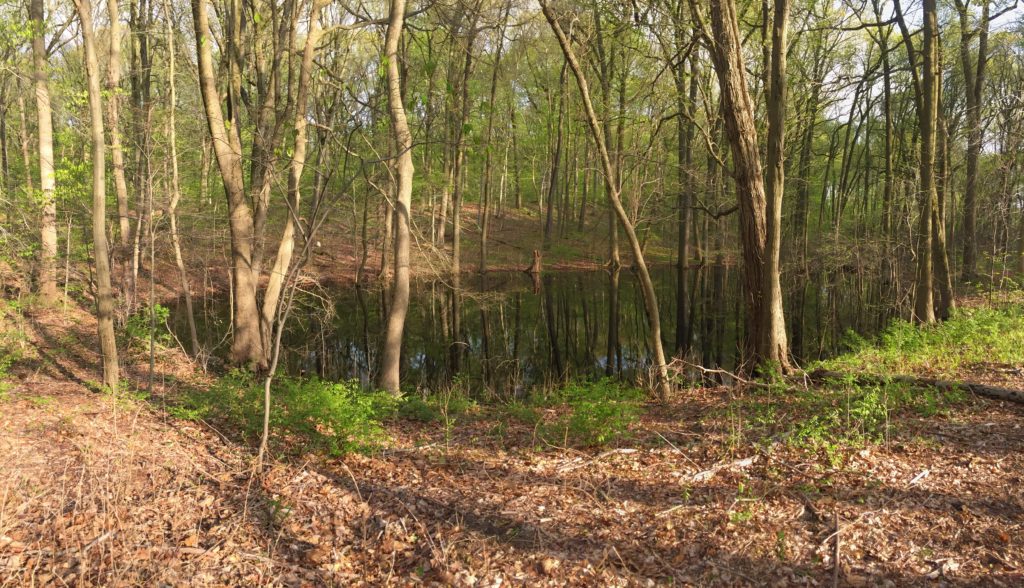Frogs and Salamanders
Critters of the
Vernal Pool
Seatuck’s Vernal Pool Project, launched in 2020, seeks to inventory, restore and protect ecologically valuable vernal pool habitat across Long Island. These unique places are essential to a wonderful assemblage of wildlife, including many of our region’s frogs and salamanders (and fairy shrimp!).
Meet some of our favorite vernal pool critters below!
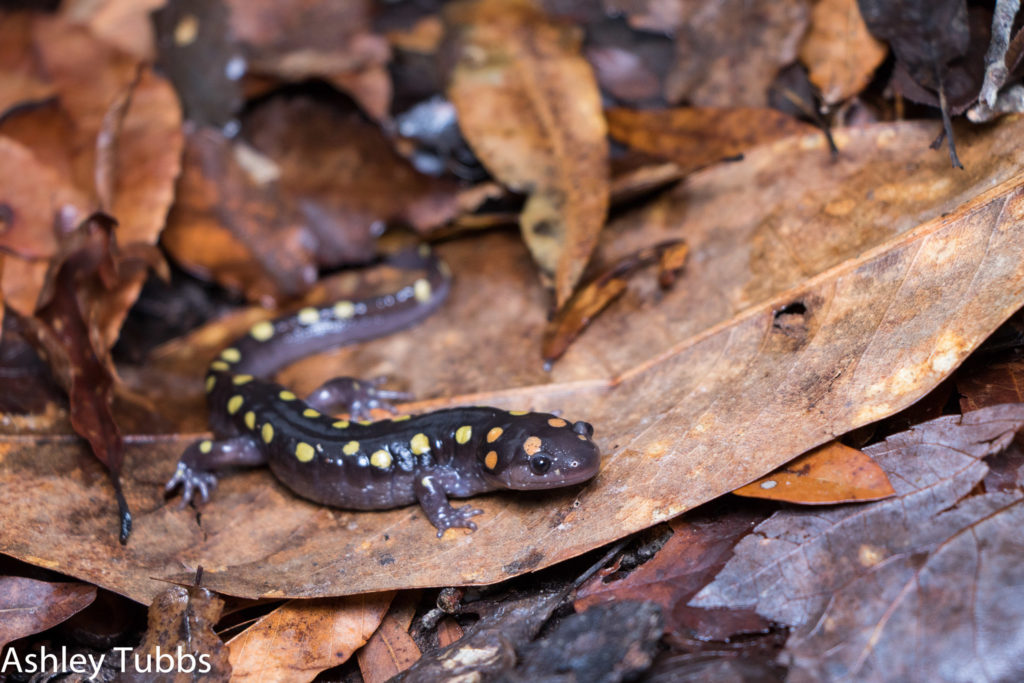
Spotted Salamander (Ambystoma maculatum)
The Spotted Salamander is visually eye-catching with a bluish-black or darker brown coloring and two rows of yellow or orange spots running from head to tail. They reach about seven to nine inches in length and can live up to 20 years. Spotted Salamanders will typically be found in hardwood or mixed forests hiding under rocks, logs, or in the burrows of other animals. Their range extends from eastern Canada through the eastern and midwestern US. They spend most of the year eating a variety of insects and other invertebrates in underground environments but will emerge in the spring to breed in seasonal vernal pools. They are dependent on vernal pools and ponds to develop their young. They are one of the iconic, obligate vernal pool species in the eastern United States.
On Long Island they are widespread but uncommon, known from several dozen vernal ponds in the northern half of Long Island and on the South Fork where they breed.
Tiger Salamander (Ambystoma tigrinum)
The Tiger Salamander has dark gray, brown, or black bodies with brownish-yellow markings that can be shaped like spots or stripes depending on the subspecies. These salamanders can live for 14 or more years and generally measure six to eight inches in length. They tend to be secretive in nature and have an ability to spend long periods of time burrowed underground, often to escape from high temperatures. Unlike other salamanders, Tiger Salamanders can dig their own burrows instead of using those abandoned by other animals. In late winter to early spring, they migrate from their upland sites where they spend the non-breeding portion of the year to vernal pools to breed and develop their young. Tiger Salamanders are dependent on these vernal pools to breed. They inhabit the Atlantic Coast of the US from southern NY to Florida, although most of these salamanders live in the central region of the US. They are listed as an endangered species in NY.
On Long Island the Tiger Salamander is restricted to several dozen vernal ponds in the Pine Barrens and on the South Fork.

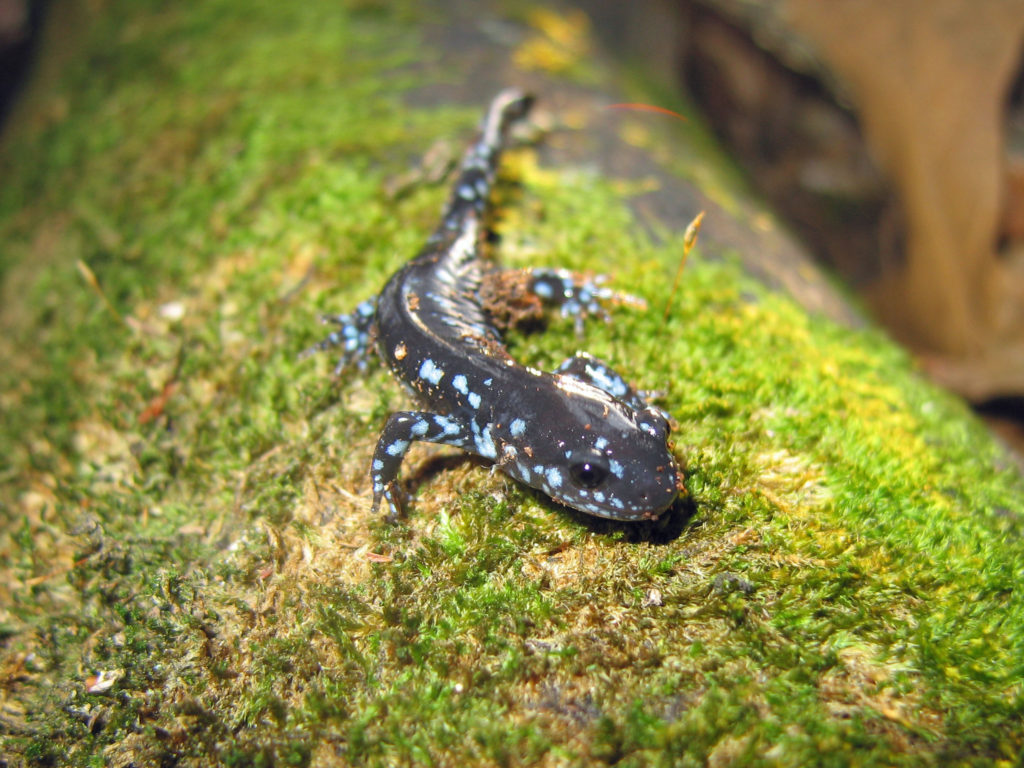
Blue-spotted Salamander (Ambystoma laterale)
The Blue-spotted Salamander is given its name due to the irregular bluish-white spots on their body, tail, limbs, and belly, over a bluish-black skin coloring, reminiscent of the enamelware of old. These salamanders reach a size of four to six inches, being somewhat smaller than spotted salamanders. They differ from other salamanders in that they can be found above ground during the warmer months but will tend to stay out of direct sunlight. Blue-spotted Salamanders live in deciduous and coniferous moist woodlands with sandy soil and spend most of their time underground in abandoned animal burrows or under rocks or logs. In the spring, they emerge to breed in seasonal vernal pools of which they are dependent on to reproduce. They are closely related to Jefferson’s Salamander, a species not found on Long Island being restricted in New York to the upper regions of the state with which they hybridize in locations where the species overlap.
On Long Island the species is restricted to vernal pools located in the eastern half of the South Fork.
Marbled Salamander (Ambystoma opacum)
The Marbled Salamander is distinctively marked with an interlaced pattern of white stripes on a dark blue to black background. One of four members of the genus Ambystoma (referred to as the mole salamanders due to their habit of spending a great deal of time in subterranean situations), the Marbled is unique in laying its eggs (which lack a jelly matrix to hold them together) along the edge of vernal pools in the Autumn.
On Long Island the Marbled Salamander is uncommon, found in vernal ponds in the central and eastern portions of Suffolk County.
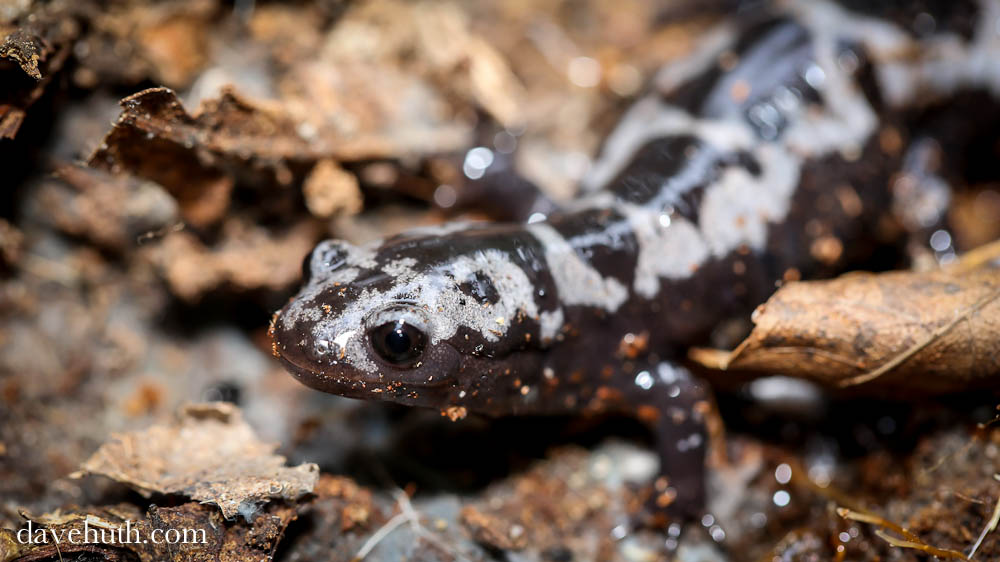
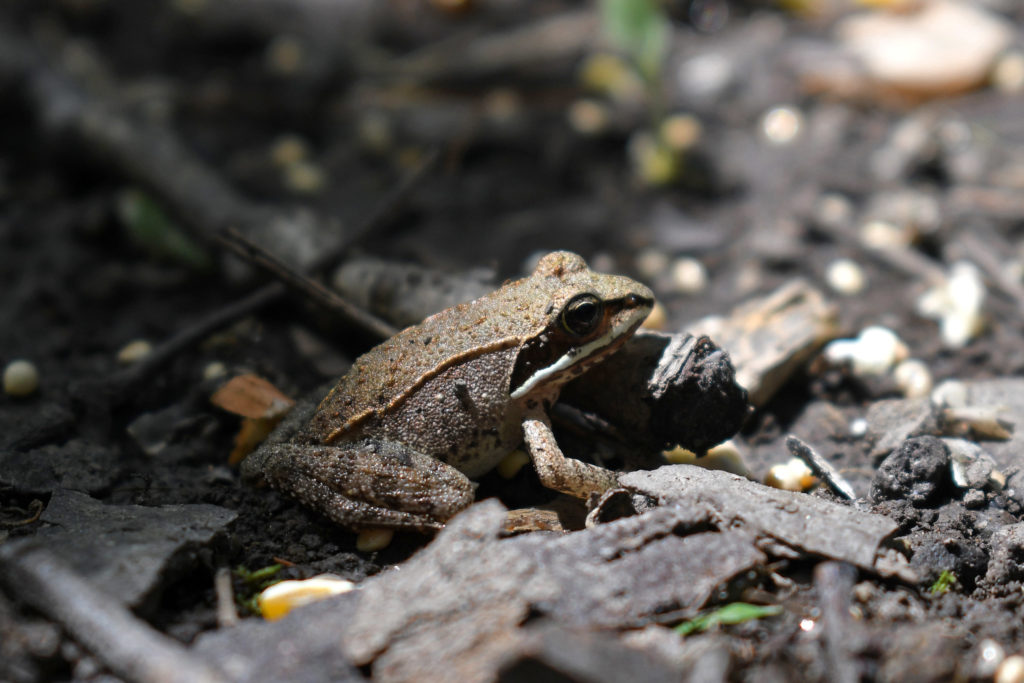
Wood Frog (Lithobates sylvaticus)
The Wood Frog, another obligate vernal pool species, has distinct black markings across its eyes which resemble a mask. They are varying shades of brown, grey, green, or red with females typically being more brightly colored. They measure about 1.5 – 3.5 inches and can live for about three years. These frogs have a unique adaptation to cold climates, in that they can withstand being frozen during the winter. For Wood Frogs to survive the colder weather their breathing will stop, their hearts will stop, and their bodies will produce an antifreeze-like substance that stops ice from freezing within their cells, which can be deadly. Ice does form between the frog’s cells, and as the weather warms the frog begins to thaw. Then in the spring, the frogs will start feeding and migrating to seasonal pools to lay their eggs. Male Wood Frogs travel to vernal pools at the first rain of the spring and start calling to females with an iconic “quacking” sound that sounds a bit like quacking ducks or barking dogs.
On Long Island the Wood Frog is widespread along the northern half of the Island and the East End.
Gray Tree Frog (Hyla versicolor)
Gray Tree Frogs are unique in that they change colors to match their environment or activities, and the colors can include green, green, or brown. They also have a bright orange or yellow underbelly that can serve as a warning to predators. Gray Tree Frogs can live up to nine years and measure 1.25 to 2 inches. Also being tree frogs, they have webbed feet and hands with enlarged tips that produce a sticky fluid, allowing them to better grip trees. They live mostly in trees throughout the year, in a variety of wooded environments like forests, swamps, agricultural land, and even backyards. As they come out of hibernation in the early spring, males will make a loud, musical call (a birdlike trill often heard on summer nights) later in the evening to find a mate. Gray Tree Frogs will breed in vernal pools and other aquatic habitats that are available.
Gray Treefrogs are widespread on Long Island.
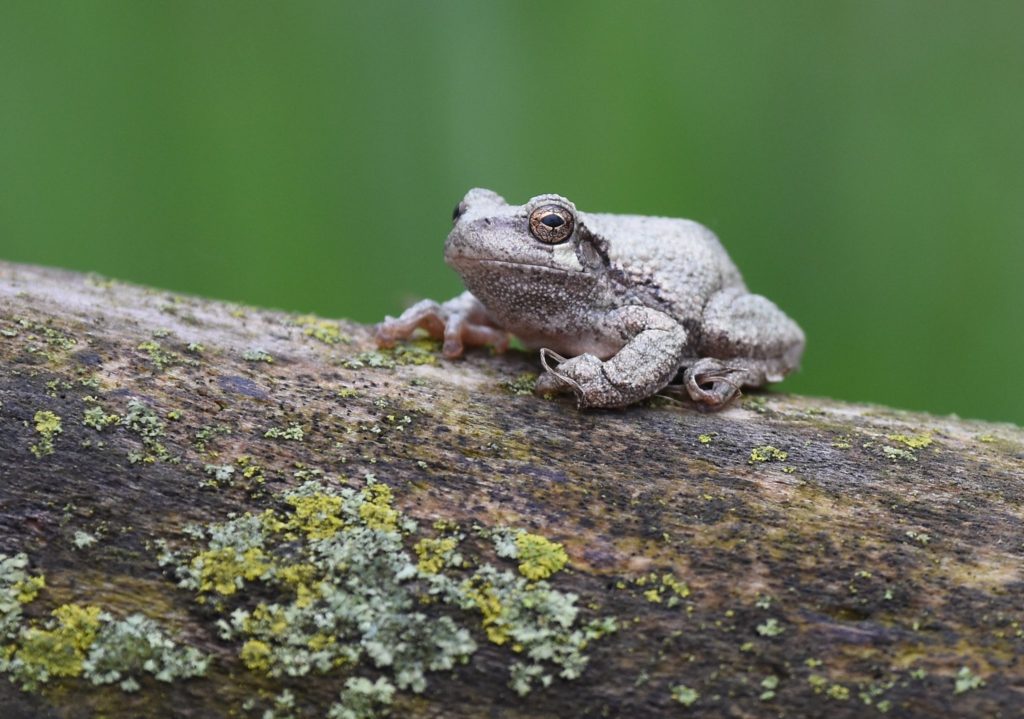
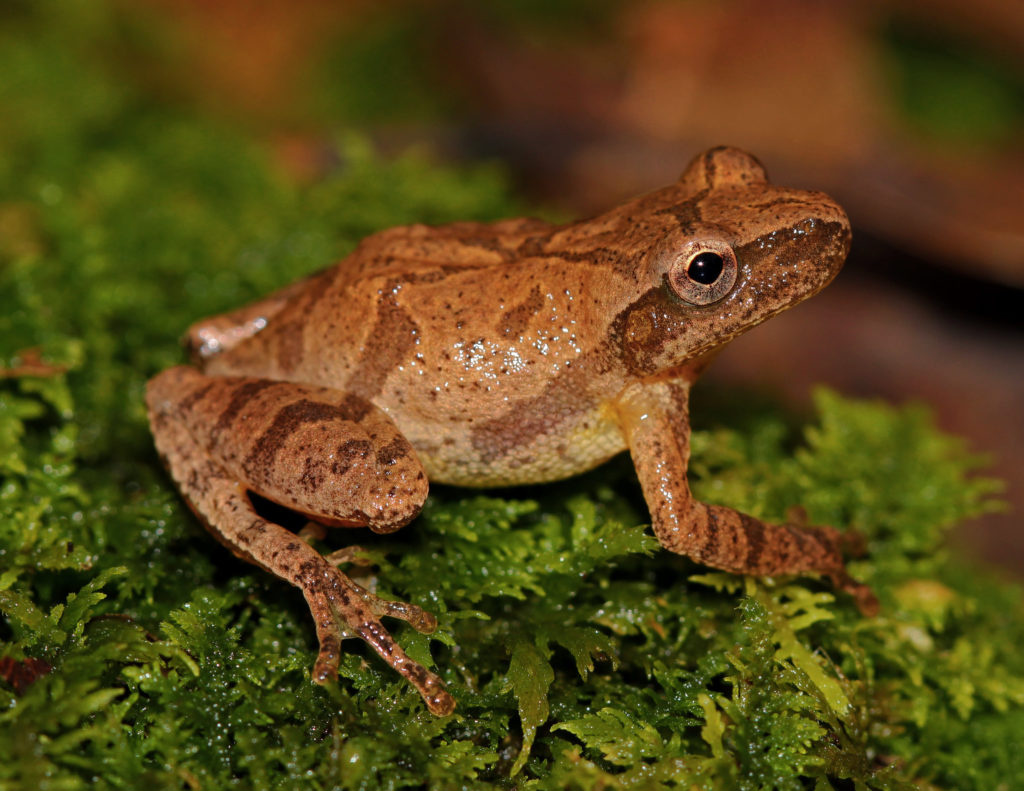
Spring Peeper (Pseudacris crucifer)
Spring Peepers have distinctive marking in the shape of an “X” on their back and tend to be a rusty brown to greenish gray color. Adults reach approximately one inch in length, about the size of a paperclip, and live about three to four years. Their range includes Southeastern Canada through to the Eastern US and they tend to live in moist wooded or grassy areas near ponds or wetlands. Spring Peepers are tree frogs, and they have sticky toe discs that allow them to live in trees once the breeding season is over. These frogs will hibernate during the winter months in holes, in loose bark, under logs, or in soft mud near waterbodies. They have a well-known mating call, in which the males make a high-pitched “peeping” or whistling sound that is repeated about 20 times in one minute. This call is one of the harbingers of Spring on Long Island. Females will lay their eggs in vernal ponds or other wetlands where there are no fish.
On Long Island Spring Peepers have a widespread distribution, owing partly to their use of artificial recharge basins.
Bullfrog (Lithobates catesbeianus)
Bullfrogs are the largest frogs in North America at 3.5 to 6 inches. They also can live up to seven to nine years long. Bullfrogs can jump up to 15 times their body length to catch their prey, like insects, small fish, small rodents, ducklings or even bats. They are a green in color, with blotchy patches of darker green, brown, or black. They are also amongst the widest ranging of North American amphibians, living in Canada, the US, and Mexico. Bullfrogs tend to live around the edges of wetlands like ponds, lakes, and swamps, and will find aquatic vegetation to provide them cover. The male Bullfrogs make a call that sounds like “jugorum,” and they will sometimes migrate from one breeding habitat to another on rainy nights.
Due to their adaptability they are widespread on Long Island, breeding in both natural ponds, and wetlands as well as recharge basins.
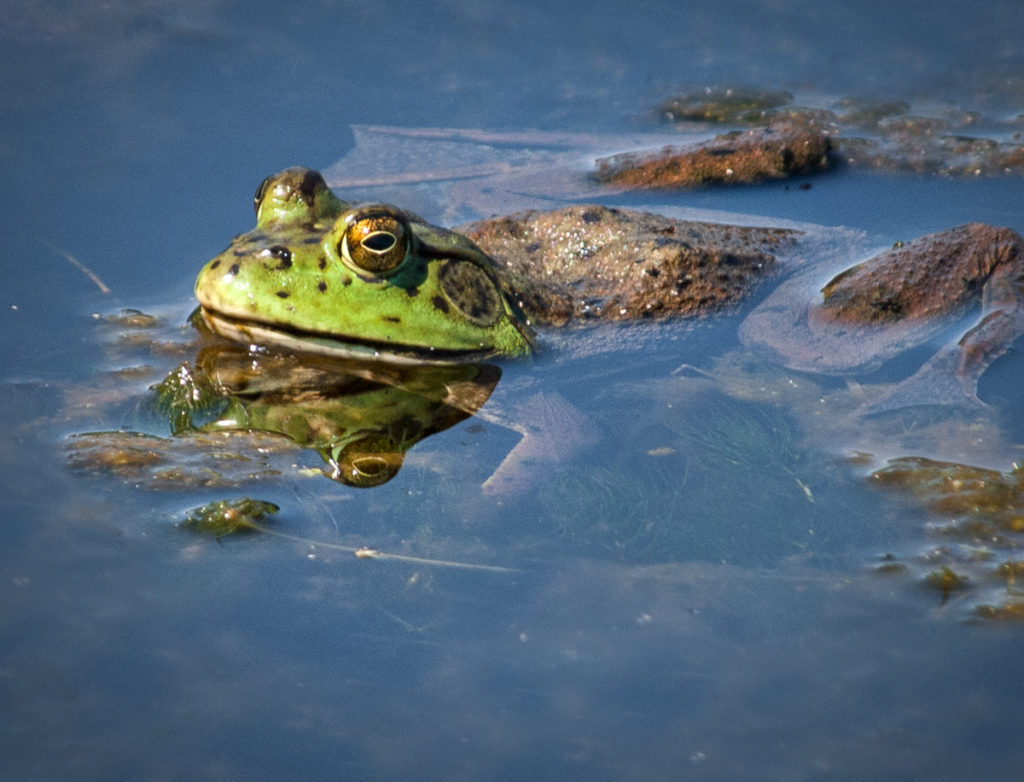
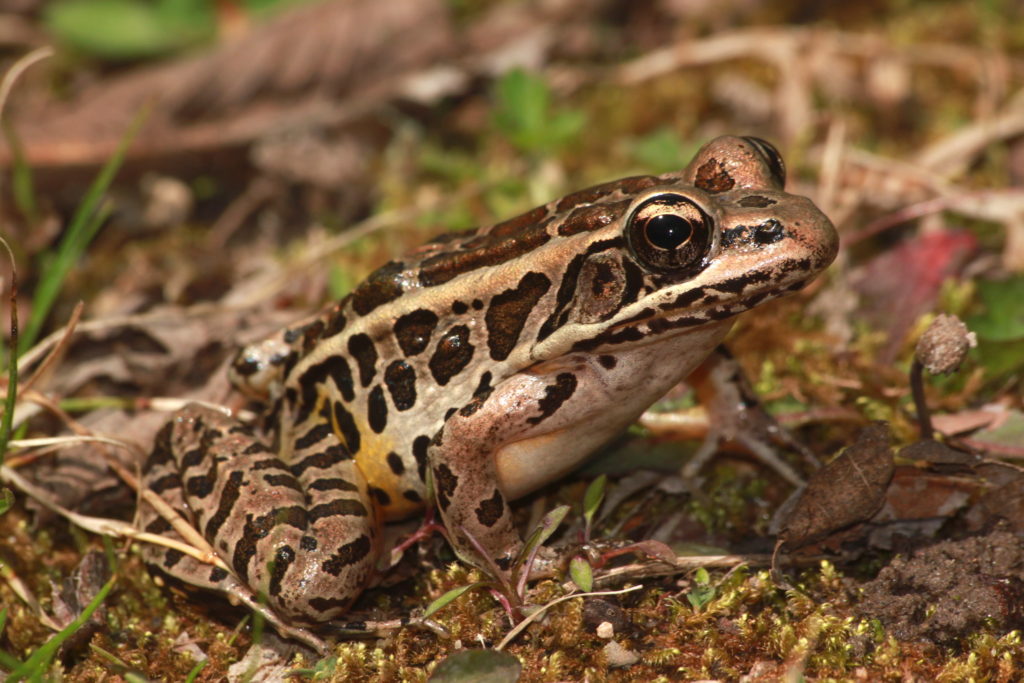
Pickerel Frog (Lithobates palustris)
With its distinctive double row of rectangular spots on its back, the Pickerel Frog is unmis- takable as are their calls, which sound a bit like a growl and a car engine. They are found in a variety of wetland habitats where they lay their egg masses which are also quite distinctive, being yellow to gold in color.
They are uncommon yet widespread on Long Island, probably having their stronghold in the Pine Barrens.
Green Frog (Lithobates clamitans)
Green Frogs are not always green, as their background coloration is variable. They can be up to two to four inches in length and can live up to five years. Female green frogs also tend to be larger than males. They inhabit most of the Eastern portion of the US extending from Canada to the Gulf of Mexico. They are amongst the most common frogs in NY State. Green Frogs will overwinter at the bottom of ponds, lakes, rivers, and streams, buried beneath mud or other debris. During the breeding season, they will stay near the lakes and permanent wetlands they live in throughout the year and migrations to breeding grounds are rare. The call of the Green Frog sounds like plucking a loose banjo string or tight rubber band.
They are widespread on Long Island being found in most permanent wetlands.
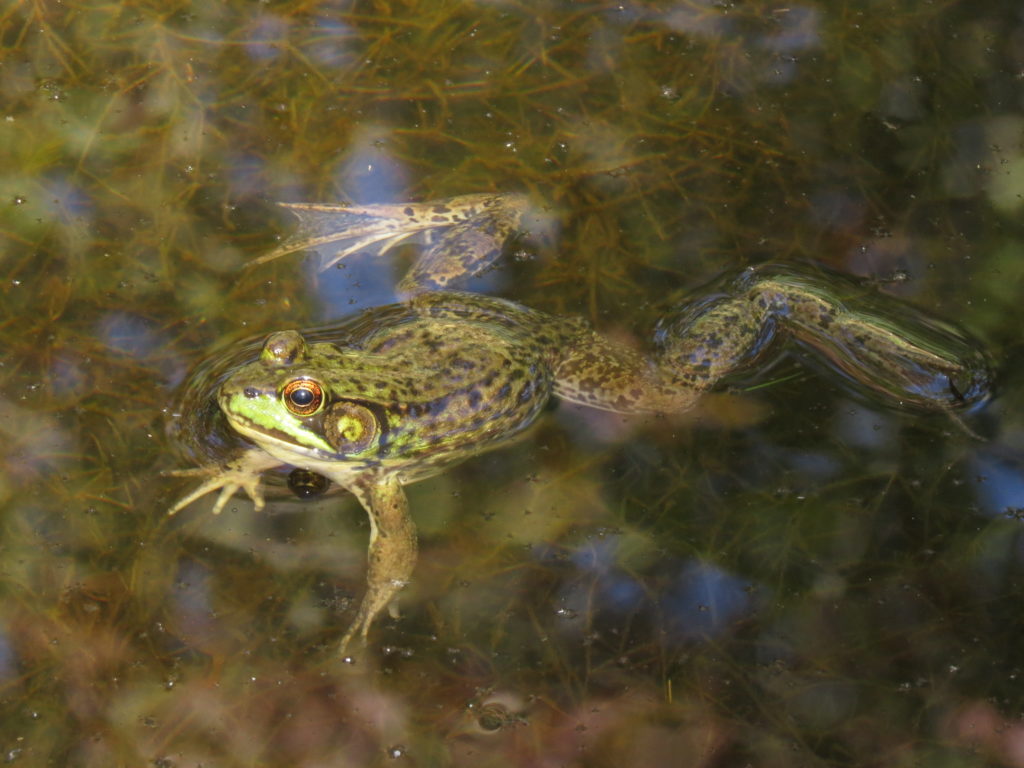
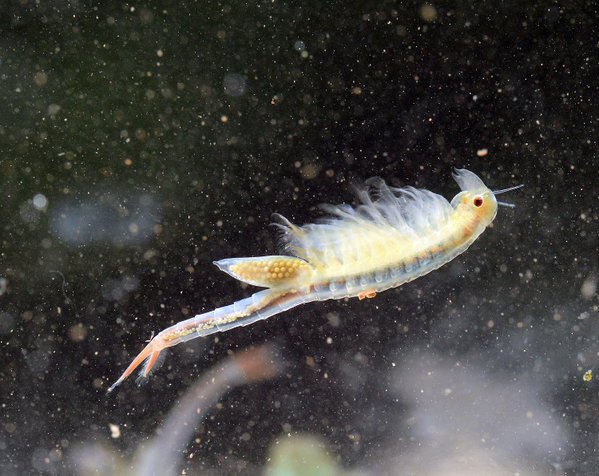
Fairy Shrimp (Eubranchipus vernalis)
Fairy Shrimp, an obligate vernal pool species, is a one inch long translucent, crustacean; a relative of lobsters and crabs. They have 11 appendages they use for swimming, feeding, and breeding. Fairy shrimp are specialized to have a short life cycle in vernal pools. When the dry depressions in the ground start to fill with water, creating a vernal pool, fairy shrimp eggs start to hatch and before they dry up again the females produce resilient eggs, called cysts, which can survive the dry season. This life strategy allows these shrimps to avoid predators that would not be able to survive the temporary environment. Fairy shrimp are also an important food source for other animals like waterfowl, however, the eggs are strong enough that they can be transported to other vernal pool locations when animals eat or walk on them.
Fairy shrimp are found in most, if not all, healthy vernal pools on Long Island.
Related Information
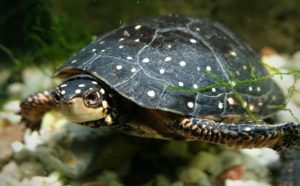
Spotted Turtles
The Spotted Turtle (Clemmys guttata) is a small, secretive, semi-aquatic species that is found in a wide variety of shallow wetland habitats and their adjacent upland areas. It was once considered the most common turtle in New York State and the New York City region.
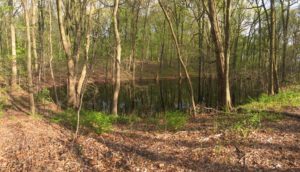
Vernal Pools
The Long Island Vernal Pool Project is an island-wide effort to identify, map and safeguard these rare habitats and the unique assemblage of wildlife they support.

